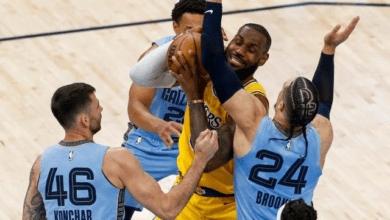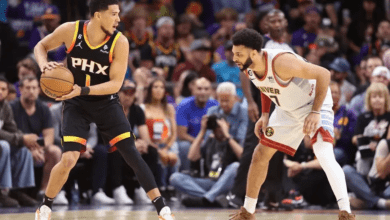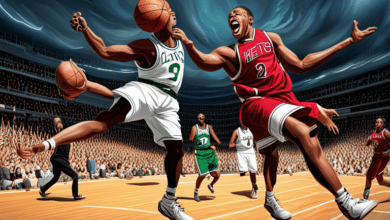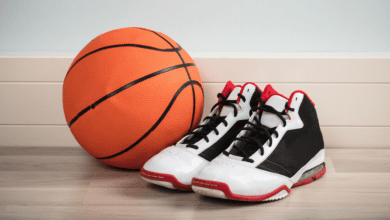How to Boost Your Basketball Skills: Essential Drills and Exercises

How to Boost Your Basketball Skills: Essential Drills and Exercises, Basketball is a fast-paced and exhilarating sport that requires a combination of skills, athleticism, and strategy.
Whether you’re a beginner or an experienced player, continuously working on your basketball skills is essential for improvement. In this article, we will explore some essential drills and exercises that can help boost your basketball skills, enhance your performance on the court, and take your game to the next level.
Boost Your Basketball Skills
Drill 1: Dribbling and Ball Control
Dribbling is a fundamental skill in basketball. Practice various dribbling drills to improve your ball-handling abilities. Start with stationary dribbling drills such as pound dribbles, crossover dribbles, and between-the-legs dribbles. Progress to moving dribbles, incorporating changes of direction and speed. Focus on keeping your eyes up, maintaining control, and mastering different dribbling techniques.
Drill 2: Shooting and Scoring
Shooting is one of the most important skills in basketball. Work on your shooting form and technique through repetition. Begin with stationary shooting drills, focusing on proper alignment, balance, and follow-through. Gradually introduce game-like situations by incorporating movement, shooting off the dribble, and shooting from various spots on the court. Remember to practice both mid-range and three-point shots to develop versatility in your scoring abilities.
Drill 3: Defensive Footwork and Agility
Defensive footwork and agility refer to the specific movements and techniques used by basketball players on the defensive end of the court. It involves a combination of quick and precise footwork, lateral movements, and agility to effectively guard an opponent and prevent them from scoring or making plays.
- Defensive Slides: Defensive slides are a fundamental footwork technique used to stay in front of the offensive player. The player starts in a defensive stance, with knees bent, hips low, and feet shoulder-width apart. They then slide laterally while keeping their feet active and maintaining a low defensive position. This technique allows the defender to move quickly from side to side and stay in close proximity to the offensive player.
- Lateral Movements: Lateral movements are essential for maintaining defensive positioning and reacting to the offensive player’s movements. This involves quick side-to-side shuffling or crossover steps to stay with the opponent and deny them any open lanes to the basket.
- Closeouts: A closeout is a defensive technique used when an offensive player has the ball and is preparing to shoot or drive to the basket. The defender sprints towards the offensive player, maintaining proper distance, and closes the gap to contest the shot or impede the drive. Closeouts require a combination of speed, footwork, and timing to disrupt the offensive player’s rhythm and reduce their scoring opportunities.
- Defensive Transitions: Defensive transitions involve quickly moving from offense to defense after a turnover, missed shot, or opponent’s score. This requires players to sprint back to their defensive positions, adjust their footwork based on the offensive players’ positioning, and communicate with teammates to prevent fast-break opportunities.
- Defensive Stance: A proper defensive stance is the foundation of good defensive footwork and agility. It involves a balanced and athletic position, with the player’s knees bent, back straight, and weight evenly distributed on the balls of their feet. This stance provides stability, quick reaction time, and the ability to change directions efficiently.
Developing strong defensive footwork and agility is crucial for effective defense in basketball. It allows players to stay in front of their opponents, contest shots, apply pressure, and create turnovers. By practicing these techniques, players can improve their ability to guard different positions, react quickly to offensive movements, and contribute significantly to their team’s defensive efforts.

Drill 4: Rebounding and Box-Outs
Rebounding and box-outs are critical aspects of basketball, particularly in securing possessions and limiting the opponent’s scoring opportunities. Let’s dive into a detailed explanation of these terms:
Rebounding: Rebounding refers to the act of retrieving the basketball after a missed shot, whether it’s from your team’s missed shot or the opponent’s missed shot. It is a vital skill for both offensive and defensive players. When your team takes a shot, offensive rebounding allows you to gain an extra scoring opportunity by grabbing the ball and attempting another shot. On the defensive end, rebounding prevents the opposing team from getting second-chance points and extends your team’s defensive possession.
Box-Outs: A box-out is a technique used to establish a favorable position between an opponent and the basket when a shot goes up, with the primary objective of preventing the opponent from getting the rebound. It involves positioning your body between the opponent and the basket and utilizing proper technique to effectively seal off the opponent and create space for yourself to grab the rebound.
Here’s a step-by-step breakdown of how to execute a box-out effectively:
- Anticipation: As the shot goes up, anticipate where the ball may come off the rim. Pay attention to the trajectory of the shot and position yourself accordingly.
- Locate your opponent: Identify the opposing player you need to box out. Keep your body between them and the basket, ensuring they have a difficult path to the ball.
- Establish contact: Make contact with your opponent using your lower body, specifically your hips and buttocks. Maintain a wide and balanced stance to absorb any contact from your opponent.
- Control the position: Use your arms to establish leverage on your opponent. Extend your arms slightly to create space and maintain control of the position. However, be careful not to commit a foul by pushing or holding excessively.
- Maintain awareness: While boxing out, keep an eye on the ball’s trajectory and be ready to react as it comes off the rim. Keep your body low and be prepared to pivot or jump to secure the rebound.
- Secure the rebound: Once the ball comes off the rim, aggressively pursue it with both hands. Use your body position and strength to shield the opponent and secure the rebound. Immediately protect the ball and look for an outlet pass or an opportunity to start a fast break.
More Posts
How to Place Successful Football Bets
How to Draft a Winning Fantasy Football Team
How to Stay Updated with IPL News and Player Performances
How to Improve Your Football Skills
Drill 5: Passing and Court Vision
Passing is a fundamental skill that improves ball movement and facilitates teamwork on the court. Practice various passing drills to enhance your accuracy, timing, and court vision. Work on both basic and advanced passes, such as chest passes, bounce passes, and overhead passes. Develop the ability to make accurate passes under pressure and in fast-paced game situations. Remember to scan the court, anticipate openings, and make smart decisions with your passes.
Conclusion
Improving your basketball skills requires dedication, practice, and a focus on specific drills and exercises. By incorporating dribbling and ball control drills, shooting and scoring practice, defensive footwork and agility exercises, rebounding and box-out drills, and passing and court vision workouts into your training regimen, you can enhance your overall game performance. Remember to practice consistently, push yourself outside your comfort zone, and seek feedback from coaches or experienced players. With time and effort, you will see noticeable improvements in your basketball skills and become a more valuable player on the court.
Frequently Asked Questions
Q: How often should I practice these drills?
A: Consistency is key. Aim to practice these drills at least a few times a week, if not daily, to see noticeable improvements in your basketball skills.
Q: Can I do these drills alone, or do I need a partner or team?
A: While having a partner or team can enhance certain drills, many of the essential drills mentioned can be practiced individually. You can work on your dribbling, shooting, footwork, and passing skills on your own.
Q: How long should I spend on each drill?
A: The duration of each drill depends on your skill level and the specific drill. Start with shorter durations and gradually increase as you become more comfortable and proficient. Aim for quality repetitions rather than simply rushing through the drills.
Q: Can these drills help me improve my basketball IQ?
A: Yes, these drills can help improve your basketball IQ by enhancing your understanding of the game, decision-making abilities, and court awareness. Remember to be mindful of the game situations while practicing the drills.
Q: Should I warm up before doing these drills?
A: Yes, it’s crucial to warm up before engaging in any physical activity, including basketball drills. Perform dynamic stretches, light cardio exercises, and basketball-specific warm-up exercises to prepare your body for the drills and reduce the risk of injuries.
By incorporating these essential drills and exercises into your basketball training routine, you can enhance your skills, improve your performance on the court, and elevate your overall game. Stay focused, stay determined, and enjoy the journey of becoming a better basketball player.






2 Comments